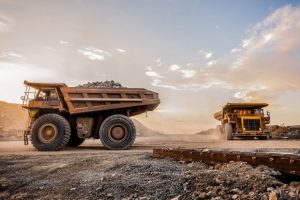Miners hold out potential to become carbon neutral
With COP-26 running this week in Glasgow, the environment has been one of the main topics in the news. Rightly so, many of you will say. We are doing a pretty fine job of trashing the planet, so it’s about time we collectively did what we can to reverse the damage.
Unfortunately, the metals industry is one of the worst culprits.
You want more MetalMiner on your terms. Sign up for weekly email updates here.
Metals industry and environmental impacts
Whether its mining, refining and smelting, processing or the transport needed to move it among so many intermediate stages of the supply chain, the metals industry is a major source of carbon dioxide, not to mention particulate matter, chemical pollutants and other forms of environmental damage.
Mining alone contributes between 4% and 7% of manmade greenhouse gases.
Unfortunately for the world, the metals industry is also part of the solution to achieve a lower-carbon future.
Metals are integral for electric cars, wind turbines and solar panels, both for their construction and continued development. In order to achieve further technological evolution, we cannot do without metals.
So, an intriguing article in Reuters outlines an opportunity for parts of the metal industry to not just reduce their carbon footprint but actually become carbon negative (that is, remove carbon from the atmosphere rather than add it).
Carbon capture and storage was hailed as the savior of the coal industry many years ago, holding out the hope that the carbon dioxide by-products could be captured and buried underground in depleted oil or gas fields. However, the economics have proved hard to overcome. Few projects have lasted more than a few years. Those that have made it have received significant levels of subsidies.
But Reuters outlined a process more akin to nature’s process, albeit sped up – years rather than millennia.
The post explains how rocks dissolved by rainwater flow into rivers, picking up other minerals such as calcium and magnesium along the way before combining with carbon dioxide and settling on the ocean bed as carbonate minerals, such as limestone. Such rock weathering absorbs around one gigatonne of carbon dioxide each year, the post explains, although the process plays out in painfully slow geological time.
Speeding up the process
One company in Iceland has found a way to speed this up by injecting as much carbon dioxide as possible into water before pumping it underground into Basalt formations. There, the acidic water reacts with the rock to form stable carbonate formations over a two year period.
The company, Carbfix, has already captured 73,000 tons of carbon dioxide this way since 2014 emitted by a geothermal power station at Hellisheidi in Iceland.
Better still, the process is cheap at around €15 (U.S. $17.50) per tonne, the post reports.
With current E.U. carbon taxes at between €50-€60 per ton of CO2, there is the potential for such a process to capture significant quantities of CO2 without subsidy.
Carbfix also announced a tie-up with Rio Tinto to sequester carbon from its ISAL aluminum smelter, which is positioned over basalt formations and for whom the opportunity to offer carbon-neutral aluminum is a game changer in the competition against Rusal’s market-leading low-carbon product.
The critical factor is the presence of suitable geological formations nearby and sufficient water. Neither are universal givens around the world.
Fortunately, it isn’t only basalt rock that can capture carbon.
Tailings at BHP mine rich in magnesium oxide
The tailings at BHP Group’s Mt. Keith mine are rich in magnesium oxide, another carbon absorber. According to Greg Dipple, the University of British Columbia professor who led a study on the waste material, the tailings have been absorbing around 40,000 tons per year carbon dioxide “accidentally and unknowingly.” Reuters explains the tailings speed up the weathering process because the rock has been crushed, exponentially increasing the surface area for mineral reaction, and allowing the mineral to bind naturally with atmospheric carbon dioxide in a chemical reaction.
If the process can be accelerated and optimized, tailings around the world could be transformed from being a liability that requires expensive management to becoming an asset that earns substantial returns.
Mt. Keith’s tailings already offset about 11% of the mine’s carbon footprint a year. With active management and development of technology to optimize the process, the benefit could be much more.
Future of mining
Such programs could help long-delayed mining projects in the U.S. over the line to development. The U.S. has become a challenging location to develop new mining projects despite plenty of natural resources still available for exploitation. Environmental objections frequently lead the way but politically, at least, carbon neutrality — or better still, a carbon-negative footprint — would be a major asset in the planning process.
From being the pariah among industrial processes, miners’ and refiners’ development of such technology, such economically attractive technology, could transform the industry. If not a leading role fighting climate change, then they could at least serve as a model for what technology can achieve while at the same time preserving living standards and livelihoods.
Cut-to-length adders. Width and gauge adders. Coatings. Feel confident in knowing what you should be paying for metal with MetalMiner should-cost models.



Leave a Reply